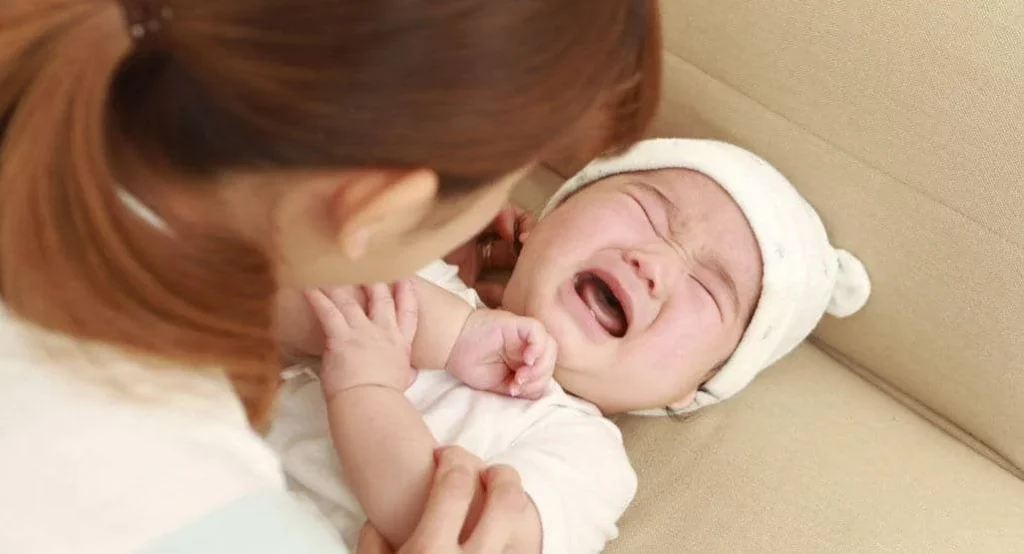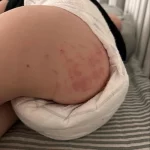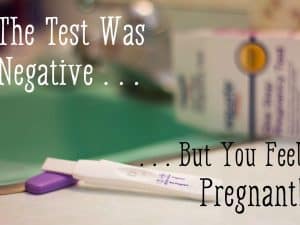
Table of Contents
Yeast infections in babies are especially common during the first 6 months of their lives. No matter the sex, babies are prone to have yeast infections because of the diapers they wear. These are caused by the overgrowth of a type of fungus called Candida albicans.
Vaginal yeast infection in adults is similar to baby yeast infection that affects over 1 million women in the United States every year. A baby yeast infection affects babies the same way a baby yeast infection would affect any adult.
A baby with a yeast infection will be grumpy and frustrated when being fed. Let’s discuss the baby yeast diaper rash, its symptoms, causes, and how to treat it effectively.
What is Baby Yeast Infection or Yeast Diaper Rash?
Yeast is a microorganism that lives in our entire body, most commonly on the skin. It prefers a warm and humid environment to thrive which is why it overgrows in the groins leading to an infection. A baby yeast infection is also known as a baby thrush and occurs due to the accumulation of dirt and bacteria in the mouth and genital area of the child. Children can get a yeast infection in their armpits, neck, mouth, and diaper area.
Kids typically do not stay still while a diaper change and that moistens the groin and puts them at risk of a yeast infection. So here’s a note for the parents: no matter how fussy your child is, change their diapers whenever and wherever it is needed. Children undergoing toilet training are equally, in fact, more prone to yeast diaper rashes and infections.
Yeast Infections vs Diaper Rash
Diaper rash refers to irritated skin (patches of inflamed skin) on your baby’s diaper. Simple at-home treatments can cure a diaper rash such as ointments, frequent diaper changes, and air drying.
Yeast infection, on the other hand, is caused by the yeast that lives in our bodies, since the immune system of babies is still developing, the folds in their skin and the diaper create a moist and warm environment where the fungus grows. The first response to a yeast infection is applying an anti-fungal cream and air drying the area along with frequent diaper changes.
Yeast infections need to be identified so that proper medical treatment can be availed. So how do you set apart a yeast infection from a diaper rash? Read the comparison table below to find out!
Point of difference | Regular diaper rash | Yeast infection |
Symptom | The color of the skin turns pinkish to reddish with either a chapped or smooth texture. | The skin reddens with pimples and red patches. |
Location | Rashes occur on the smooth surfaces of the vulva or the buttocks. | Rashes typically occur in the folds of the buttocks, genitals, or legs. |
Other areas | Rashes are localized to a single area. | Satellite rash spots can be found outside the border of the rest of the rash. |
Thrush | Doesn’t usually occur. | Thrush infection also affects the baby’s mouth along with the yeast infection rashes, |
Treatment | Rashes can be cured with diaper creams within 2 to 3 days. | Rashes won’t respond to typical diaper creams. |
Signs and Symptoms of a Yeast Infection in Babies
Yeast infection in babies can be really uncomfortable causing them to turn fussy and until the nappy changes, you may never know what’s causing the fussiness. To help you, we listed a few possible signs and symptoms of a yeast infection in babies that will alert you to seek medical treatment as soon as possible. Check them out:
- A bright red rash with a slightly elevated border
- The rash appears only under the diaper and does not migrate to other parts of the body
- Pimples, blisters, ulcers, and pus-filled sores are common on their skin
- Small red patches that link to other large patches
Causes of Baby Yeast Diaper Rash
Candida albicans is the common cause of yeast infections in babies. Although this fungus is the second most common cause of all diaper rashes (called diaper dermatitis), it is also responsible for some diaper rashes which are caused by the following health conditions:
- Maceration of the skin
- Overhydration of the skin
- Skin that has been in contact with urine and excrement for an extended period
- Soaps for diapers
- Biotin deficiency- having 3 or more diarrheal stools per day
- Dermatitis of the skin
- Symptoms of an allergy
How to Diagnose Baby Yeast Infections?
Scientifically, skin scrapings or biopsy material is cultivated and examined under a microscope after a potassium hydroxide treatment shows the fungus, but this is rarely used to diagnose a yeast infection in a baby. In regular scenarios, all that is needed to diagnose a yeast inf
Baby Yeast Rash Diaper Treatments
Medical Treatments for Yeast Infections in Babies
The goal of curing a yeast infection in a baby is to heal the affected skin by keeping it clear of yeast growth. These are the typical treatments medically suggested for treating yeast diaper rash:
- Almost all diaper rash or yeast infections can be treated with diaper rash creams such as medical zinc oxide creams as the first line of defense.
- Antifungal medications (for example, nystatin cream) may be administered if yeast is the source of infection/diaper rash.
- Hydrocortisone cream (1% hydrocortisone) can help with pain and inflammation.
At-home Treatment for Yeast Diaper Rash in Babies
At-home treatments for baby yeast infections are always the best before you take any medications. It saves you money and any side effects that may occur because of the medicines.
Listed below are some at-home treatments for baby yeast infections:
- Keep The Area Clean and Dry
All causes of diaper rash, including yeast infections, can be avoided by changing diapers more frequently and keeping the diaper region clean and dry. Also, clean the diaper area well and thoroughly each time you do a diaper change. Make sure to wash your hands after each change to prevent the spread of the yeast infection. You could also choose to air dry your baby’s bottom or pat the area dry gently without rubbing.
- Have Diaper-free Time
Avoid diapers that are too tight on the skin. Allowing the child to go without a diaper for a short period, such as lying the child on a dry towel, reduces the risk of a yeast infection. Keep a play mat or towel to catch the mess when your baby goes diaper-free. We recommend doing so right after a diaper change to prevent mess, on the other hand, for younger babies, you can let them go diaper-free during their tummy time.
- Avoid Irritants
If your baby has developed a yeast infection, the affected skin will be very tender. Any products like a bubble bath or soap that irritate the skin can worsen the baby’s discomfort. Hold off cleaning the baby with wet wipes during diaper changes if they have a yeast infection. Instead, use a clean wet towel to wipe off the mess. Make sure the towel is wet in warm water only.
- Use Anti-fungal Creams
To treat yeast infections, over-the-counter home treatments such as Vaseline, Triple Paste, A+D ointment, Desitin, and are available for both therapy and prevention. Diaper rash and/or severe yeast infections can necessitate extra therapy, such as systemic antifungals and perhaps hospitalization.
Gentian violet is a purple ointment that kills yeast but it may not be as effective as other antifungal creams. Before using any product on children for yeast infections or diaper rash, see your child’s doctor. Follow their instructions on which cream to use, how often to use in a day, and how long to use them.
Are Yeast Diaper Rashes Dangerous for Babies?
Yeast infections are not dangerous for children, but they can be very uncomfortable and cause itching. Young babies are more prone to itching sensation with yeast infections. In children with a weak immune system, the virus can enter the bloodstream in rare situations.
This can also happen in children who may have had medical issues that need placement of IVs or catheters under their skin for extended periods. The majority of yeast-related diaper rashes are harmless. However, skin breaks can occur as a result of severe yeast infections and/or diaper rash, allowing additional organisms to infect the person.
When To Call Your Child's Doctor/Children's Hospital?
You can call your child’s doctor if your child/children get a fever, or rash starts oozing, or your child has open sores, pimples, or blisters, you should see a doctor. This could be a sign of a bacterial infection that requires medical treatment.
If your child is less than 6 months old, it’s best to call the doctor to make sure you’re treating it appropriately and that there’s no other problem. The rashes which worsen, don’t go away, or spread to the abdomen, back, arms, or face should be seen by a doctor.
A doctor will be able to examine a yeast infection just by looking at it. However, sometimes a test or diagnosis may be conducted which will confirm that the rash is a yeast infection. A KOH test is conducted, where the infected area is scanned under a microscope to confirm it as a yeast infection.
How to Prevent Yeast Infection in a Baby?
The best way to prevent and treat yeast diaper rash is to keep your baby’s bottom clean and dry. Below are a few tips that might help you to prevent yeast infection or diaper rash.
- Baby wipes containing scents or alcohol should be avoided.
- Cloth wipes should be washed 2 or 3 times and no fabric softeners or dryer sheets should be used.
- As soon as your child urinates or passes stool, change their diaper.
- At each diaper change, carefully clean the diaper region with water.
- Before putting on a new diaper, pat the area dry or allow it to air dry.
Can Baby Powder Be Helpful For Yeast Diaper Rash?
There is conflicting evidence on the safety of using baby powder to try to keep the diaper area dry and aid in avoiding a yeast rash. Many people think that yeast will consume corn flour. The primary component of many infant powders is cornflour.
There is no connection between using cornflour and increased yeast growth, according to the research.
However, it hasn’t been demonstrated that baby powder can cure an existing yeast diaper rash. In reality, using baby powder on youngsters is not advised since it might harm their lungs from inhalation.
Baby Yeast Infection Pictures
Takeaway
Baby yeast infections or diaper rash are very common in children and are treatable. As a parent, you might feel guilty that you are responsible for your baby’s rash. Consult a doctor if your child continues to have yeast infections regularly. Frequent yeast infections could have an underlying cause that has to be treated. Yeast infections in the diaper area will automatically heal and stop once your baby stops wearing diapers.
Baby Yeast Infection FAQs
Candida infections are caused by a type of yeast (fungus) called Candida. It normally lives on our skin and inside the vagina, throat, gut, and mouth without any reactions. If conditions in these areas change to a humid and warm environment, then they start to overgrow leading to an infection.
Yes, diaper rash and yeast infections can be cured. It takes anywhere between 2 to 3 weeks for both types of rashes to disappear completely. Anti-fungal creams or diaper rash creams are typically used to treat them but in some cases, OTC medications are also administered
The common causes of vaginal yeast infections are:
- Uncontrolled diabetes
- Pregnancy hormones
- Weak immune system
- Oral contraceptives
- Antibiotics
Keeping the diaper area clean and dry helps to prevent yeast infection/ diaper rash. Here’s what you can do:
- Don’t use diapers or rubber pants that prevent airflow
- Give your baby enough diaper-free time
- Regularly bath your baby in warm water
- Frequently change the soiled diapers
Sources:
- https://www.cdc.gov/fungal/diseases/candidiasis/genital/index.html
- https://www.ncbi.nlm.nih.gov/pmc/articles/PMC5014885/
- https://pubmed.ncbi.nlm.nih.gov/28379098/
- https://www.ncbi.nlm.nih.gov/books/NBK543220/
- https://www.ncbi.nlm.nih.gov/pmc/articles/PMC8212580/
- https://www.ncbi.nlm.nih.gov/pmc/articles/PMC3994805/
- https://www.ncbi.nlm.nih.gov/pmc/articles/PMC3512570/









